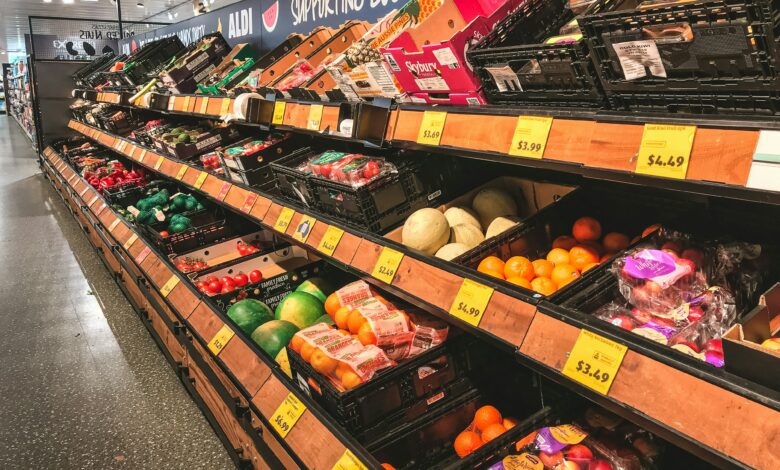
How to Open a Convenience Store in 9 Steps
Opening a convenience store might seem like a daunting task, but with the right steps, it can be a highly rewarding venture. For entrepreneurs, small business owners, and retailers, this guide will provide a comprehensive roadmap to successfully setting up and running a convenience store.
By following this article, you will have a clear understanding of the necessary steps, from creating a business plan to managing customer feedback.
Looking for Convenience Store Names? Check out this article here.
What is a Convenience Store?
A convenience store, often referred to as a c-store, is a small retail business that stocks a range of everyday items. These stores are typically open long hours and are located in high-traffic areas to provide maximum accessibility to customers.
The Popularity of Convenience Stores
Convenience stores have become an essential part of modern life.
These small retailers offer a wide variety of everyday items, such as snacks, beverages, toiletries, and even over-the-counter medicines, making them a go-to destination for quick and easy shopping.
The convenience store industry has grown exponentially due to its ability to meet the fast-paced lifestyle of today’s consumers.
Benefits of Owning a Convenience Store
- Steady Revenue Stream: Convenience stores attract a constant flow of customers seeking quick purchases, ensuring a steady income.
- Low Entry Barriers: Compared to other businesses, convenience stores require a relatively low initial investment and minimal specialized skills.
- Community Hub: Serving as a local hub, convenience stores foster community relationships and customer loyalty.
How to Open a Convenience Store in 9 Steps
1. Create a Business Plan
A well-structured business plan is the foundation of a successful convenience store. It should include:
- Business Concept and Objectives: Define the mission, vision, and goals of your store.
- Target Customers and Ideal Customer Profile: Identify the demographics and preferences of your potential customers.
- Marketing and Promotional Strategies: Outline how you will attract and retain customers.
- Financial Projections and Revenue Estimates: Provide a detailed financial forecast, including expenses, revenue, and profit margins.
- Details About Products and Pricing: List the products you will sell and their pricing strategy.
- Analysis of Competitors in the Market: Evaluate your competitors and identify opportunities for differentiation.
2. Choose a Location
Selecting the right location is crucial for the success of your convenience store. Consider the following factors:
- Accessibility and Traffic: Choose a location that is easily accessible and has high foot traffic.
- Customer Demographics: Ensure the location aligns with the demographics of your target customers.
- Competition: Assess the competition in the area and identify ways to differentiate your store.
- Visibility: Ensure your store is visible from the road and has good signage.
- Safety and Security: Evaluate the safety of the area and implement necessary security measures.
- Growth Potential: Choose a location that allows for future expansion.
- Operational Needs: Consider the layout and size of the retail space.
- Zoning and Permits: Research zoning requirements and obtain necessary permits.
3. Get Legal Requirements
To legally operate a convenience store, you must obtain the following permits and licenses:
- Retail Seller Permit: Required for businesses selling tangible personal property.
- Business Operation License: Necessary for the legal operation of your store.
- Health Permit: Required if you plan to sell food items.
- Alcohol and Tobacco License: Needed to sell alcohol or tobacco products.
- Lottery Retailer’s License: Required to sell lottery tickets.
- Employer Identification Number (EIN): Used for tax purposes if you have employees.
- Doing Business As (DBA) License: Required if operating under a different name.
- Federal Employer Identification Number (EIN): Required for tax reporting.
- Occupation Permit: Necessary for the legal operation of your store.
- Gas Permit: Required if selling gasoline.
4. Secure Funding
Securing adequate funding is essential to cover startup costs and initial operating expenses. Consider the following options:
- SBA Loans: Small Business Administration loans offer favorable terms for small businesses.
- Venture Capitalists: Investors who provide capital in exchange for equity.
- Bank Loans: Traditional loans from financial institutions.
5. Get Suppliers / Stock Up Store
After securing funding, identify reliable suppliers to stock your store. Build relationships with wholesalers to get the best prices and ensure a steady supply of products.
6. Hire Staff
Hiring the right staff is crucial for the smooth operation of your convenience store. Look for young, active individuals who can handle tasks efficiently and provide excellent customer service.
7. Market Your Store
Effective marketing is essential to attract customers. Utilize the following strategies:
- Local Newspapers: Advertise in local publications to reach nearby customers.
- Hoardings: Use billboards and signage to increase visibility.
- Social Media: Promote your store on platforms like Facebook and Instagram.
- Discounts and Sales: Offer promotions to attract larger crowds.
8. Invest in Good Technology
Investing in technology can streamline operations and enhance customer experience. Consider the following:
- Store Management Software: Helps manage inventory, sales, and customer data.
- Payment Processing Software: Ensures smooth and secure transactions.
9. Customer Management
Maintaining good customer relationships is key to long-term success. Continuously gather feedback and address customer needs to improve satisfaction.
Pros and Cons of Owning a Convenience Store
Pros
- High Demand: Convenience stores cater to a constant need for quick purchases.
- Flexibility: Owners can adapt product offerings based on customer preferences.
- Community Engagement: Stores often become integral parts of their communities.
Cons
- High Competition: Many convenience stores compete for the same customer base.
- Operational Challenges: Managing inventory and staffing can be demanding.
- Security Risks: Stores may face theft and other security challenges.
Small Convenience Store Ideas
1. Mini Grocery Store: Offer essential groceries like milk, bread, eggs, and fresh produce.
2. Snacks and Beverages Shop: Focus on a wide variety of snacks, drinks, and quick bites.
3. Health and Wellness Store: Stock health foods, organic products, vitamins, and supplements.
4. Pet Supply Corner: Provide pet food, toys, and other pet essentials.
5. Local Products Shop: Feature products from local artisans and farmers, such as jams, honey, and crafts.
6. Quick Meal Solutions: Offer ready-to-eat meals, sandwiches, salads, and microwaveable options.
7. Bakery and Coffee: Sell fresh pastries, bread, and a selection of coffees and teas.
8. Travel Essentials: Stock travel-size toiletries, snacks, maps, and other traveler necessities.
9. Kids’ Convenience: Focus on snacks, small toys, school supplies, and kid-friendly products.
10. Organic and Eco-Friendly Store: Specialize in organic foods, eco-friendly products, and sustainable packaging.
11. Tech and Gadgets Nook: Offer phone accessories, chargers, headphones, and small electronics.
12. Seasonal Specialty Shop: Change your inventory based on the season, such as beach gear in summer and holiday items in winter.
13. Ethnic Foods Store: Focus on ethnic and specialty foods that cater to specific communities.
14. Bulk and Refill Station: Provide bulk food items and refill stations for grains, spices, and cleaning products.
15. DIY Corner: Stock basic DIY and home repair items like tools, paint, and hardware.
16. Pharmacy and Personal Care: Offer over-the-counter medications, toiletries, and personal care products.
17. Gift Shop: Sell greeting cards, small gifts, flowers, and wrapping supplies.
18. Ice Cream and Desserts Bar: Focus on ice creams, frozen treats, and desserts.
19. Second-Hand Goods: Combine convenience items with a selection of second-hand goods and thrift items.
20. Sports and Outdoor Gear: Offer sports equipment, outdoor gear, and fitness accessories.
21. Office and School Supplies: Stock stationery, office supplies, and back-to-school essentials.
22. Garden and Plants Store: Provide gardening tools, plants, seeds, and small garden decorations.
23. Magazine and Bookstand: Include a variety of magazines, books, and newspapers.
24. Home Essentials: Offer household items like cleaning supplies, batteries, and kitchen essentials.
25. Automotive Supplies: Stock car maintenance products, air fresheners, and travel accessories for drivers.
26. Lottery and Tobacco Shop: Focus on selling lottery tickets, tobacco products, and related accessories.
27. Quick Pick-Up Location: Partner with online retailers to serve as a pick-up location for online orders.
28. Craft Beer and Wine Shop: Specialize in craft beers, wines, and related accessories.
29. Fresh Juice and Smoothie Bar: Offer freshly made juices, smoothies, and healthy drinks.
30. Specialty Diet Store: Cater to specific dietary needs with gluten-free, keto, or vegan products.
Specialty Products
Consider offering unique or specialty products that are not readily available at other stores. This differentiation can attract a niche market.
Eco-Friendly Options
Source eco-friendly products to appeal to environmentally conscious customers. This can include reusable shopping bags, organic snacks, and sustainable household items.
Local Partnerships
Partner with local businesses to offer their products in your store. This can build strong community ties and attract loyal customers.
List of Convenience Store Suppliers
National Wholesalers
- McLane Company: Offers a wide range of products, including snacks, beverages, and household items.
- Core-Mark: Provides a comprehensive selection of convenience store products.
Regional Distributors
- Harbor Wholesale: Serves the Pacific Northwest with a variety of products.
- Eby-Brown: Operates in the Midwest and offers a wide range of convenience store items.
Specialty Suppliers
- GreenDropShip: Focuses on natural and organic products.
- Kellogg’s: Provides a wide range of breakfast and snack items.
FAQs about Convenience Stores
How Much Does it Cost to Open a Small Convenience Store?
The cost to open a small convenience store can vary widely, ranging from $50,000 to $300,000, depending on factors such as location, size, and product selection.
Is Owning a Convenience Store Profitable?
Owning a convenience store can be profitable, especially with effective management and marketing strategies. Profit margins typically range from 20% to 30%.
What Permits Do I Need to Open a Convenience Store?
Essential permits include a retail seller permit, business operation license, health permit, alcohol and tobacco license, and lottery retailer’s license.
Conclusion
Opening a convenience store can be a rewarding and profitable venture when approached with careful planning and execution. By following the steps outlined in this guide, entrepreneurs, small business owners, and retailers can successfully launch and manage a thriving convenience store.
The key to success lies in understanding your market, securing the right location, and continuously engaging with your customers. For further resources and personalized assistance, consider reaching out to industry experts who can provide valuable insights and support.

